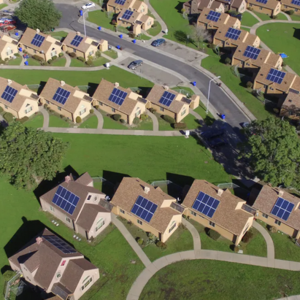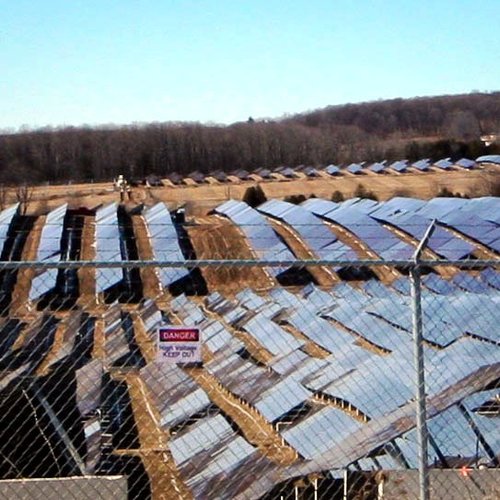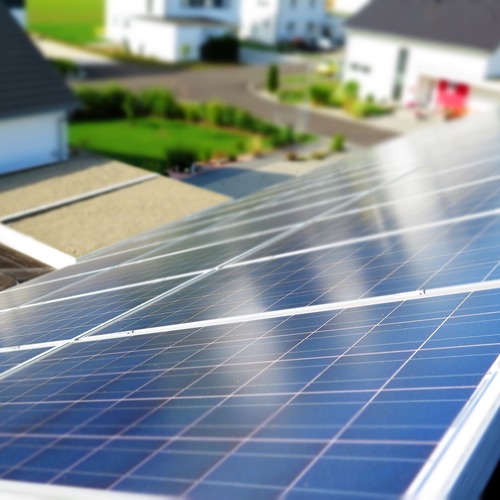
This guest blog was written by Ryan Shea, Arthur Coulston, and Rushad Nanavatty of the Rocky Mountain Institute.
In order to meet social distancing requirements brought on by the Covid-19 pandemic, cities across the United States are moving permitting services, including solar, online. The International Code Council (ICC) recently surveyed its members and found that 65% of local code permitting officials have moved to remote work in response to the pandemic.
This sudden digital move has many local governments considering much-needed overhauls to their systems. To meet this urgent need, Rocky Mountain Institute is helping communities transition to the National Renewable Energy Laboratory’s (NREL) recently launched SolarAPP (Solar Automated Permit Processing) online platform. SolarAPP aims to standardize the instant permitting process across the US to align with best practices in countries that are leading the way on residential solar.
By moving to the platform, local governments can support local solar jobs, attract business to their communities, relieve overburdened permitting departments, and increase tax and fee revenue. In addition, SolarAPP can save residents money and allow rooftop solar to finally realize its potential as a major climate and resilience solution in the US.

Supporting the hard-hit solar workforce
The residential rooftop solar industry is a major job producer, primarily in small businesses. In 2019, residential solar represented over 90,000 of the 160,000 installation and project development solar jobs in the United States (of 250,000 total solar jobs), representing growth of 269% since 2010. Of those, 93% are with small businesses that employ fewer than 250 people.
Covid-19 has set back the solar industry significantly. Earlier this summer, the Solar Energy Industries Association (SEIA) estimated that 65,000 solar jobs had been lost due to Covid-19, wiping out five years of job growth.
Implementing SolarAPP can help local governments spur solar job growth by attracting solar companies to work in their permitting-friendly jurisdictions and encouraging them to expand into new and untapped markets. To date, installers have entirely avoided some jurisdictions with onerous permitting, reinforcing the unequal distribution of solar industry effort; only five states account for two-thirds of all cumulative residential solar installations. By reducing the cost of rooftop solar, automated online permitting could further increase demand and the business activity and jobs that come with it.
Saving headaches, time, and money
Automating solar permitting can provide relief to overburdened local permitting and inspection departments. Some jurisdictions have reported receiving more permit applications for solar and battery storage than for any other building category. This will soon become the reality for many jurisdictions as home solar and storage cumulative capacity is projected to grow by more than two-fold and eighteen-fold, respectively, by 2025.
An automated permitting platform, like SolarAPP, with nationally standardized processes to ensure systems are code compliant will be essential for permitting departments to continue to achieve their mission of ensuring building safety in an effective and efficient manner. This will be particularly relevant for new battery storage systems that come with complications that officials may not be as familiar with.
In addition, automated permitting could free up staff time to work on other projects. While varying significantly by jurisdiction, it has been estimated that the average building department takes six staff hours to process a single permit. Compare that to an automated online platform where permit processing can occur almost instantaneously.
Increasing the number of permits processed also increases building department revenue since they are largely fee funded. For example, consider a department in a large solar market that processes 100 solar permits a month and charges a $200 permit fee. If automated permitting could process even 25% more permits, the department would generate $5,000 more in fee revenue per month to allocate at their discretion.
This increase in installs would also translate to an increase in around $6,000 per month in local sales tax income (assuming the average local sales tax rate of 1.4%). For local governments with revenue streams hit hard by Covid-19, this additional revenue is desperately needed.
Reducing delays and costs
Residential solar in the United States is more than twice as expensive as in other leading solar countries, costing around $3.30/watt (national average estimates varying from $2.70/watt to $3.70/watt from NREL, SEIA/Wood Mackenzie, OpenSolar, and LBNL) versus around $1.10/watt in Australia and $1.25/watt in Germany. That’s $10,500 more for the typical 5 kW system.
These higher costs are partly due to solar’s soft costs, or non-hardware costs, such as permitting, inspection, and interconnection (PII); overhead; and customer acquisition. While soft costs account for approximately 65% of overall residential solar costs in the United States, they are only around 25% and 15% in Australia and Germany, respectively. One major factor in this difference is a national PII process in Germany and Australia versus an unstandardized and onerous PII process that varies across 18,000 local jurisdictions and more than 3,000 utilities in the United States.
This unstandardized process leads to customers in the United States waiting significantly longer, typically one to three months, for their installed system after they sign the contract. This drawn out process leads to much higher U.S. customer cancellation rates—and the unique need for post-sale customer care teams. And as one might expect, cheaper and easier to install systems are also easier to sell. Customer acquisition costs are approximately $0.35/watt in the United States versus only $0.05/watt in Australia and Germany.
So, while direct permitting costs represent only a small percentage of soft costs, all of the indirect and hidden PII costs add up to a much larger amount. SEIA even estimates that SolarAPP could reduce solar costs by $1/watt, or 30% of the upfront cost. With the positive feedback loop of cheaper systems and more efficient processes growing the solar industry, the cost reduction potential could be even greater.
Helping rooftop solar reach its potential
If soft costs can be properly addressed, rooftop solar could finally unleash its potential as a distributed climate and community resilience solution. In 2016, NREL estimated that small buildings (less than 5,000 square feet) in the United States have enough rooftop area suitable for solar PV to generate 25% of total U.S. electricity consumption (residential solar generated 0.5% of U.S. electricity in 2019 and overall solar PV supplied 2.5%).
And while around 2.5% of U.S. single family homes have rooftop solar, over 21% of Australia’s homes include rooftop solar. Achieving Australia’s residential solar penetration rate would result in 130 GW more of installed rooftop solar capacity (up from 15 GW), offsetting over 7% of U.S. electrical consumption (up from 0.9%) and generating over $450 billion more economic activity (assuming $3.30/watt) and 3.5 million jobs (assuming 26 solar jobs per MW by averaging estimates by NREL’s JEDI model [22], BNEF [23], and NREL’s solar installer survey [33]).
Local governments can help
A handful of U.S. cities have already demonstrated that instant online permitting processes are possible. The City of San Luis Obispo, California, implemented online and instant permitting starting in April 2020, and within weeks Sunrun achieved an industry-first same-day install. To fully address the soft-cost problem, however, we need to move past one-off solutions; cities across the country need to adopt a standardized online platform.
With support from the Department of Energy, NREL has worked over the past year to convene leaders in building safety and rooftop solar to develop the requirements for the SolarAPP instant permitting platform. NREL is currently testing SolarAPP with jurisdictions and will open the tool for broader adoption in the coming months.
To support interested communities, the American Cities Climate Challenge Renewables Accelerator, co-led by Rocky Mountain Institute and World Resources Institute, is featuring the SolarAPP adoption process in our upcoming residential solar cohort. The cohort communities will combine SolarAPP with community purchasing campaigns to accelerate community-wide rooftop solar adoption, with a particular focus on benefitting low-income and historically marginalized communities.
Moving to the SolarAPP online platform is a win-win for local governments and their residents. If your local government is interested in reducing solar costs, widening access to clean energy benefits, and accelerating community-wide adoption of rooftop solar, please reach out to Ryan Shea at [email protected] to learn more.
This post originally appeared at the Rocky Mountain Institute Outlet and is republished here with permission.
Weekly Newsletter
Get building science and energy efficiency advice, plus special offers, in your inbox.















16 Comments
So this is improving a situation that will almost always remain a waste of green dollars? Even if 2/3 of Lazards's levelized cost of residential solar were eliminated, utility scale solar would still be much more cost effective.
> residential solar generated 0.5% of U.S. electricity in 2019 and overall solar PV supplied 2.5%
Lazard's figures suggest that for the same cost, we could have used only utility scale and been at almost 5% overall. It's unfortunate that we didn't do this.
PS - Yes, I'm aware that Lazard doesn't include all costs. But I expect that they would further the argument.
Residential solar is still a reasonable financial investment. Sure, utility scale solar is much more cost effective. But so what? Taking the train would be more efficient than driving. But there's no train.
When I put solar on my roof, I did the math and it made $$ sense. $16,000 after federal credit bought me an average of about $1300 per year in electricity. When I can earn 0.3% on my money, investing in solar is a better risk free investment. What else does one do with "green dollars?"
"Taking the train would be more efficient than driving. But there's no train."
Hard to argue with that logic!
> But there's no train
To the contrary, there are a nearly infinite number of "trains", ie alternative ways to spend green dollars. The question is which ones are most cost effective.
No doubt that the government has distorted the economics such that what makes financial sense for the individual isn't consistent with what makes sense at a larger scale. Statements like "Achieving Australia’s residential solar penetration rate would ...." only encourage the continuation of this mistake.
Its interesting on website that regularly calls for, pushes and supports a vast expansion of government intrusion into every aspect of our lives to control our behaviors and force/limit our choices, someone actually admits the massive costs introduced by government.
Maybe you should take it one step further and question why the government even needs to be in the middle of the transaction in the first place instead of just assuming they have to be there.
In spite of the article 's claims, there's no way permitting costs represent a third of the cost of residential solar. I was speaking with a solar installer recently and asked him why costs seem to be stuck at around $3 a watt. He said labor is the primary driver of costs. This is in Maine, where permitting is pretty simple and very unbureaucratic.
The government needs to be involved to prevent dangerous installations that don't comply with code.
Lawyers serve the same purpose of enforcing safety...some gets hurt or killed...people get sued and they change their standards.
I'm more than capable to install my own system as are many other people. Try calling your local government personal and see if they can help....I doubt it. The government is more dangerous in any situation.
This article's title is quite amusing....a virus is effecting an energy situation????? What's going on here GBA????
Tom, see all those words after the title? That's the article, in which the author expands on the title.
You don't find it interesting or wonder how a VIRUS is causing all kinds of changes in the world??? What's the real virus?
I have to say that this article is ridiculous. Those living in California, and including most of the western states, understand the urgency of climate change. The day before yesterday the temperature in my hometown in northern California hit 111 degrees. A truly ridiculous temperature. The days after the sky all around the state is orange and animals are confused in the middle of the day if its early morning or late evening because its so dark. Please read this article to understand the apocalypic nature of what is going on. https://slate.com/technology/2020/09/west-wildfires-temperature-swings-climate-change.html
About 1% of the energy in the whole of the United States is currently provided by Solar PV. That is miniscule. Yet folks here are excited about the faster pace of permitting for solar PV installations on homes. Jon is right that it's far cheaper to put up solar PV farms. But the big point that everyone misses is simply the urgent need for a remedy to climate change. We need to build it fast or everyone on the Earth will begin to suffer like the western states are suffering now. That means getting everyone on board to begin building wind and solar farms. It doesn't have to be implemented by the government but they have a role in coordinating it. Rooftop solar is just not gong to cut it in time to avoid the most catastrophic results of climate change.
Everyone here on a green building site should stop arguing about their little niche gripe that means it can't be done. It HAS to be done and done quickly or we're all dead. The way things are going reminds me of an old war movie I just saw, A Bridge Too Far. The first half of the movie was everyone preparing for an extremely dangerous mission across enemy lines in Germany. As they were preparing one of the generals involved in that organization was telling his underling to make sure he packed his golf clubs. That's the feeling I got from this article. I think maybe thinking a bit bigger is appropriate at this time.
the solution is we need to unbuild. Less is more.
So who's home are you going to knock down and then recycle the materials? Yours? Are you suggesting mandating living with strangers comrade? Since this is your suggestion I'll put you on the list as volunteering to do your part, is that OK?
I suspect your idea applies to other people. Or maybe you're just trolling as usual.
Calm yourself Eric. Your the comrade. I don't need anything from you. Peace. Strangers can make great friends.
Yes definitely. Peace.
I read this post your post so nice and very informative post thanks for sharing this post
Solar Panel System Australia Renewable energy is one such thing gifted to mankind by mother nature. Decades of scientific advancements now make us competent enough to explore these renewable sources for accomplishing our energy demand in the most suitable way so that we can leave a better world for our upcoming generations.
Log in or create an account to post a comment.
Sign up Log in